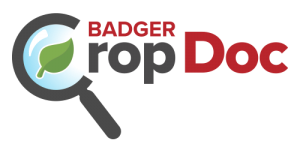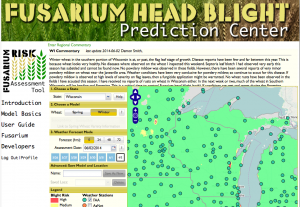Wisconsin Winter Wheat Disease Update – June 6, 2014
Damon L. Smith – Extension Field Crops Pathologist, University of Wisconsin
Winter wheat in the southern portion of Wisconsin is heading and will be flowering in the next few days. This is a critical time to control Fusarium head blight (scab). Currently the Fusarium Head Blight Prediction Center (http://www.wheatscab.psu.edu) is predicting low risk for head blight for most of the state of Wisconsin. Rain is forecast for this weekend and early next week. This may increase the risk for head blight, so growers and consultants should watch the weather and the FHB Prediction Center carefully if their wheat is flowering.
Areas of the state also have malting barley and risk for FHB can be high if conditions are favorable during barley head emergence. Timing of fungicide application should occur as the head is emerging to protect open flowers if the weather is conducive for FHB.
If a fungicide is warranted for control of scab, products such Prosaro, Caramba, or similar that contain triazole active ingredients can offer suppression of scab and reduce deoxynivalenol (DON) accumulation in harvested grain. These products should be applied within a week from the beginning of flowering for reasonable control. Products containing strobilurin fungicides should be avoided on wheat that has headed. Research has demonstrated that levels of DON can be higher after treatment with strobilurin products after heading.
No rust or powdery mildew has been observed in wheat that I have looked at. Reports from area extension personnel and consultants also confirm these observations. Wheat appears to be relatively disease free in much of the state this year.



